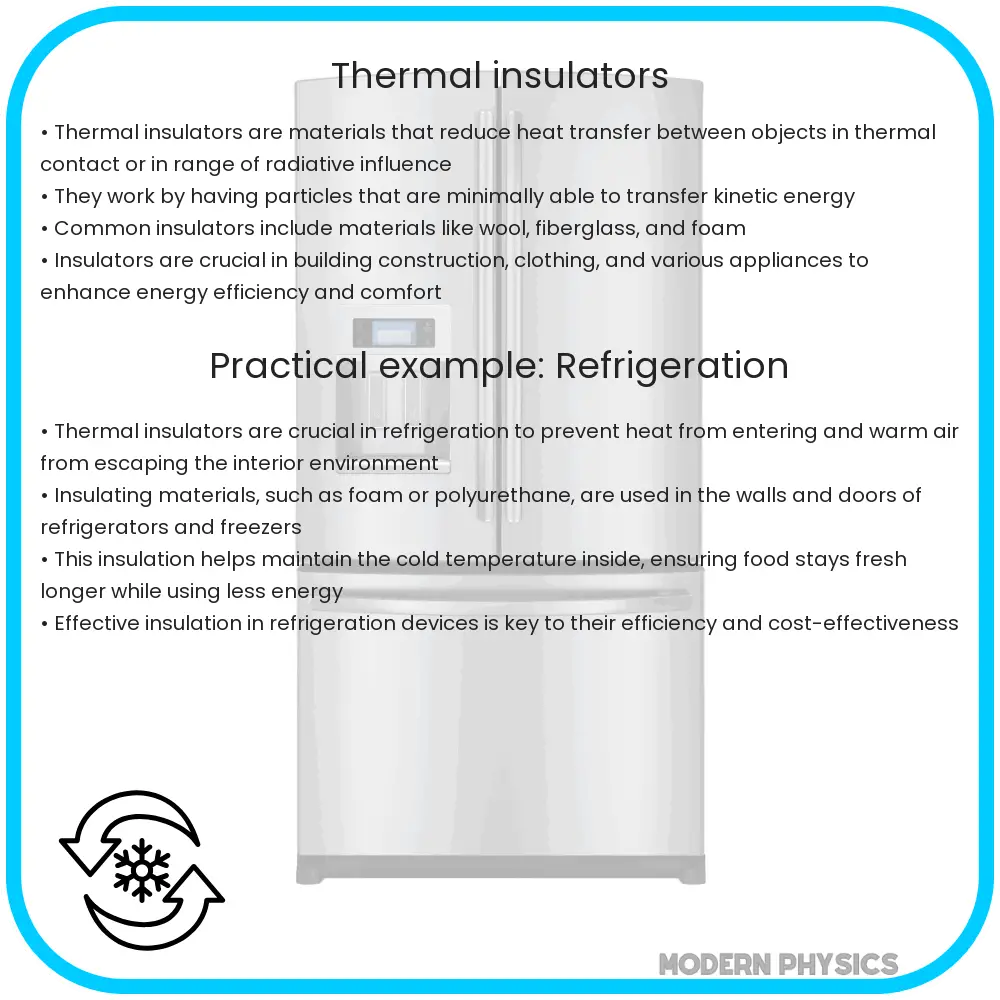Explore the efficiency, types, and applications of thermal insulators, from fiberglass to aerogels, and their role in energy conservation.

Understanding Thermal Insulators: Efficiency, Types, and Applications
Thermal insulation plays a crucial role in conserving energy in various industries and everyday applications. By reducing heat transfer between objects in thermal contact or in the range of radiative influence, insulators contribute significantly to energy efficiency.
Efficiency of Thermal Insulators
The efficiency of a thermal insulator is determined by its thermal conductivity, denoted as ‘k’. Lower ‘k’ values indicate better insulation properties. This efficiency is also influenced by factors such as temperature, density, and moisture content. Materials with a high resistance to heat flow are more effective in minimizing energy loss.
Types of Thermal Insulators
- Fiberglass: Composed of fine glass fibers, fiberglass is widely used in building insulation. It’s lightweight, cost-effective, and has a low thermal conductivity.
- Mineral Wool: Includes rock wool and slag wool. It’s made from natural or synthetic minerals and is excellent for thermal and sound insulation.
- Polyurethane Foam: Known for its high insulation value, this foam is used in spray and rigid foam forms for building insulation.
- Polystyrene: Available as expanded (EPS) and extruded (XPS) polystyrene, this material is used in structural insulated panels and molded products.
- Natural Fibers: Materials like wool, cotton, and cellulose (derived from recycled paper) are eco-friendly options with good thermal resistance.
- Aerogel: Known for its extremely low thermal conductivity, aerogel is used in high-tech applications requiring superior insulation.
Applications of Thermal Insulators
Thermal insulators find applications in various domains:
- Building Construction: Insulation in walls, roofs, and floors helps maintain a building’s interior temperature, reducing heating and cooling costs.
- Industrial Applications: Insulation in industrial equipment and pipelines minimizes energy loss and protects workers from extreme temperatures.
- Automotive: Insulators in vehicles enhance energy efficiency and comfort by regulating interior temperatures and reducing engine noise.
- Aerospace: High-performance insulators like aerogels are used in spacecraft to protect against extreme temperatures in space.
- Consumer Products: Everyday items like refrigerators, ovens, and thermal clothing utilize insulation to maintain desired temperatures.
Understanding the properties and uses of different insulators can significantly aid in selecting the right material for specific applications. The right choice not only enhances energy efficiency but also contributes to sustainable practices.
Advanced Innovations in Thermal Insulation
Recent advancements in material science have led to the development of innovative insulating materials. One notable example is Vacuum Insulation Panels (VIPs), which offer exceptionally low thermal conductivities by creating a vacuum barrier. Another emerging material is phase-change materials (PCMs), which absorb or release heat at specific temperatures, thus maintaining a stable environment.
Factors Influencing the Choice of Insulators
When selecting an insulator, several factors need to be considered:
- Thermal Conductivity: The primary indicator of an insulator’s effectiveness.
- Flammability: Important in applications where fire safety is a concern.
- Water Absorption: Critical in environments prone to moisture.
- Durability: Longevity and resistance to degradation are essential for sustainable usage.
- Eco-friendliness: Preference for materials that are recyclable and have a low environmental impact.
Environmental Impact and Sustainability
Environmental considerations are increasingly shaping the development and use of insulating materials. Eco-friendly insulators not only reduce energy consumption but also minimize the carbon footprint associated with their production and disposal. The recycling of materials like cellulose insulation or the use of renewable materials like wool insulation are examples of sustainable practices in this field.
Conclusion
In conclusion, thermal insulators are pivotal in enhancing energy efficiency across various sectors. From traditional materials like fiberglass to cutting-edge aerogels and PCMs, the range of insulating materials available today caters to a diverse array of applications. Innovations in this field are not only pushing the boundaries of thermal efficiency but are also embracing sustainability. By understanding the properties, types, and applications of different thermal insulators, individuals and industries can make informed decisions that contribute to energy conservation and environmental protection. The future of thermal insulation lies in balancing performance with ecological responsibility, ensuring a greener, more sustainable world for generations to come.
